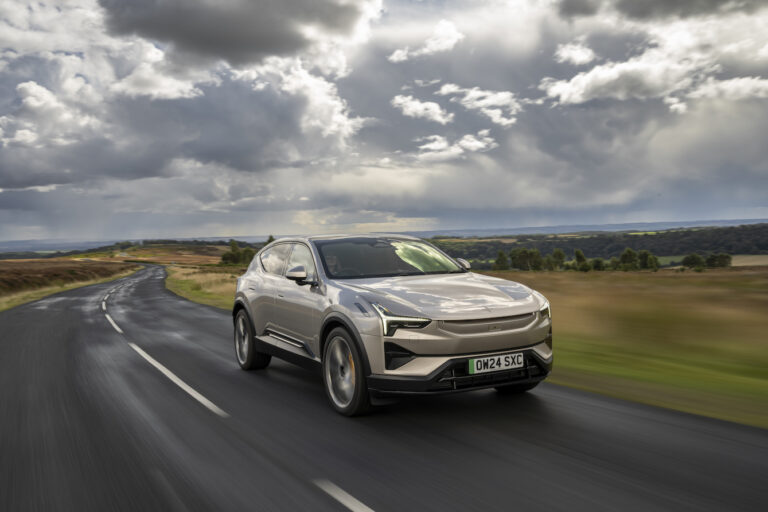SUVs. Love them or loathe them, you simply can’t get away from them, for the simple reason that people keep buying them. And, unsurprisingly, Polestar has jumped on the bandwagon with its new 3, the sister car to the new Volvo EX90 which arrives to showrooms at the same time as the new 4 coupe.
Unlike the Volvo however, this 3 is just a five-seater SUV with lower and sleeker lines putting it into competition with the likes of the Audi Q8 e-tron and BMW iX, although the Polestar does boast a huge 111kWh battery and a very impressive range of up to 390 miles.
POLESTAR 3 – DESIGN
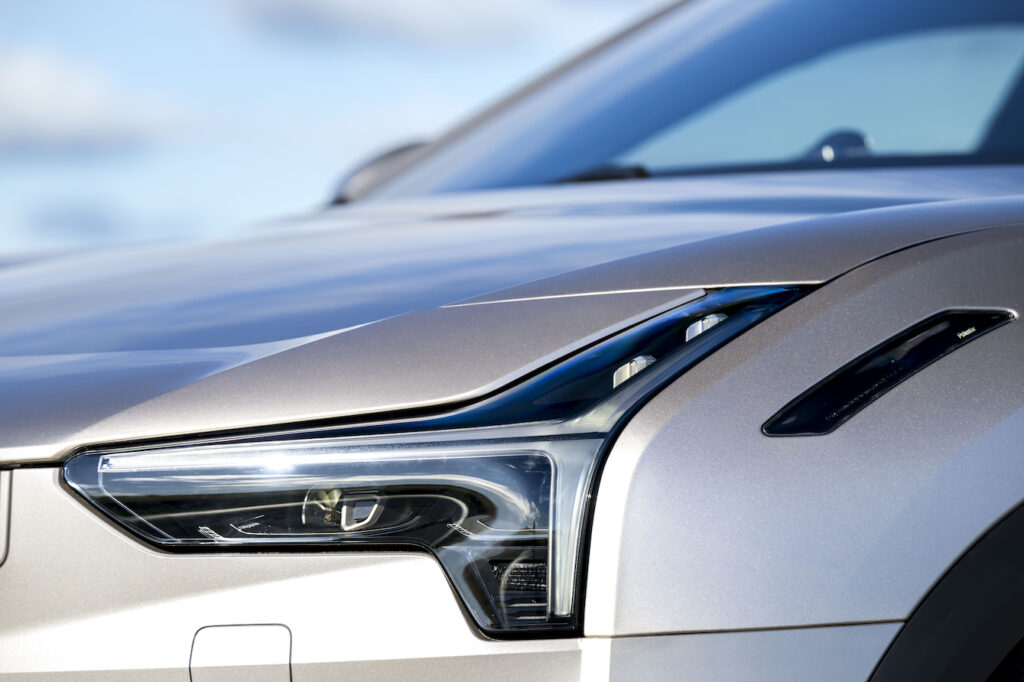
The Polestar 3 might not have the eye-catching, headline-grabbing missing rear windscreen of its 4 stablemate, but there’s little doubt that the 3 is a stunning piece of design.
The sharp, sleek nose (we still don’t like the text on the bodywork), thin headlights, low roofline with the waistline kicking up to that thick C-pillar and thin rear lights. Pictures make it seem and feel like a smaller car than it really is, but it’s a handsome machine. There are even hints of old Volvo design in the rear wing shoulders too.
POLESTAR 3 – POWER AND RANGE

All Polestar 3s come with a 111kWh battery and dual motor four-wheel drive, the only choices are a Performance Pack model which gives you 510bhp rather than ‘just’ the 483bhp of the standard car.
They offer ranges of 349 miles or 390 miles respectively and the additional pace of the Performance Pack is negligible when even the base model will race from 0 to 60mph in 5.0 seconds and onto a 130mph top speed. A single motor version, not yet on sale, offers 295bhp but a 403 mile range.
Polestar claims an average efficiency of 2.9mls/kWh which isn’t outstanding, but also isn’t that bad when you consider that the 3 tips the scales at over two and half tonnes. The 3 also boasts a maximum 250kW DC charging speed and 10-80% charging in 30 minutes if you can find a charger fast enough.
POLESTAR 3 – ON THE ROAD
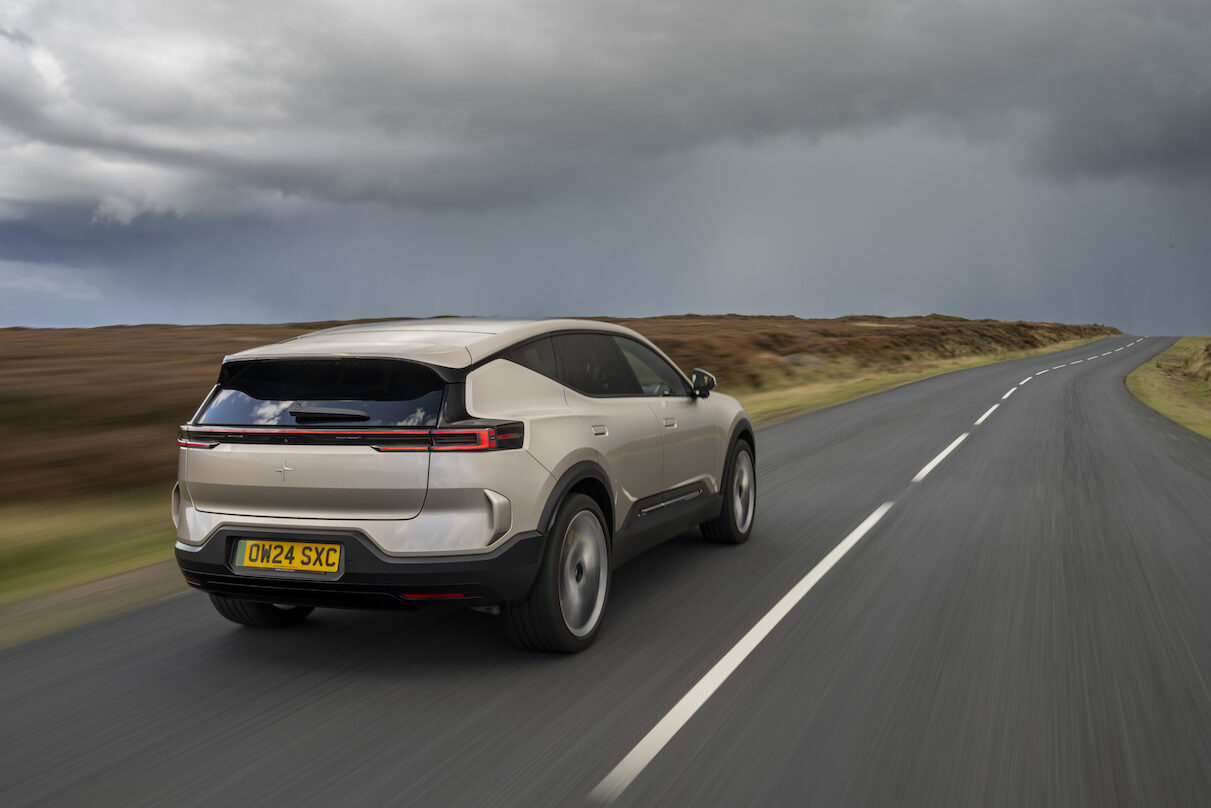
Our time with the Polestar 3 probably wasn’t the usual experience of a typical potential owner. We had spent the morning driving the 4 coupe which we left feeling somewhat underwhelmed by for its slightly clinical feel at the wheel. If we’re being honest, we expected more of the same of this 3, especially as it was larger and heavier.
The reality however, couldn’t be more different. It’s hard to describe why this is, especially as the 3 has the same variable steering, suspension and regenerative braking menus as the 4. Instead, everything from the 3’s steering which feels more linear than the 4 and also its overall road feel too which gives a more-connected sense to the tarmac beneath you, gives it a better driving experience.
In short, it feels far more like a traditional ICE car than many EVs, which is a high compliment indeed. It’s also fearsomely fast. Not so long ago, a car capable of the 0 to 60mph sprint in just 5.0 seconds would have needed a Ferrari or Lamborghini badge on the bonnet, but large battery EVs can now match that with relative ease from an otherwise sedate family car.
The result, along with that good road feel, is that the 3 can be hustled along a twisty country road with a good degree of confidence and verve. The only thing is that it’s not a small car, so whether you’d actually want to do that is another matter. Like that potential available performance, it’s simply not something you’ll want to access, comfortably, on a regular basis, if ever in fact after your first try. An uncomfortable truth is that, outside of a race track, that kind of performance is simply not pleasant to experience first hand.
The ride however, is pretty good, despite running on large 21-inch alloy wheels, but we’d still like to have a slightly stronger level of regenerative braking available to us. Even on the maximum setting, it’s perhaps not quite as strong as you might expect coming from some other EVs.
POLESTAR 3 – INTERIOR
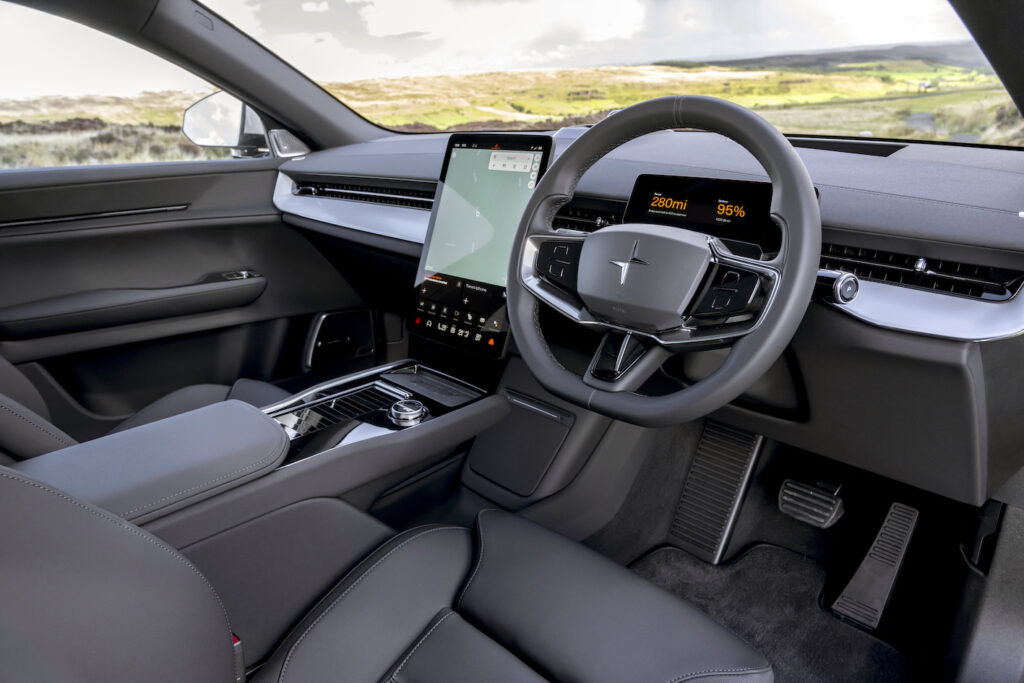
Like the 4, the dashboard of the 3 is dominated by a large touchscreen, but unlike the 4, this time it’s in an upright portrait orientation rather than landscape in the 4.
Almost all of the controls are operated via this touchscreen including, annoyingly, the glovebox, though thankfully unlike the 4, the directional control of the dash vents is manual rather than also done via the screen. Admittedly not many buyers are likely to be jumping between the two different cars, but it seems slightly odd when almost every other brand has a continuity of controls and layouts as people grow through their vehicles. It’s also not entirely uncommon for households to have more than one model from the same brand too.
That said, there’s nothing wrong with the materials or build quality which are exceptional. There’s lots of space and, again like the 4, the glass in the door mirrors goes right to the edge, rather than having a protective surround. Not normally an issue, but for anyone towing a caravan (not unlikely at this level), it causes issues for mounting extender mirrors.
Another niggle are the electric window switches which, like the VW ID3, offer only two actual switches with another button to switch between the front and rear. That might be acceptable on the ID3 where the solution was bought in to save money, but on a £75 grand car it feels a bit cheap.
There’s also a good degree of practicality too, with plenty of room in the back seats and a 484 litre boot (1411 with the rear seats folded down), though there won’t be a seven-seater version at any point – that’s being left to the Volvo EX90.
SUMMARY
Given that they are being introduced at the same time and given that we drove them both on the same day, it’s hard not to compare this 3 with the 4, even if they’re likely to attract very different buyers.
While there are some similarities between the two – and we’re certainly not big fans of so many controls being unnecessarily exported to an all-encompassing touch-screen – it’s surprising just how different they actually feel on the road and how they both drive. Added to that is that it’s comfortable and stylish and certainly desirable – even with its hefty price tag.
With that in mind, this 3 is the more preferable of the two and, for us, is a very creditable alternative to the Audi Q8 and BMW iX especially if you’re after an large electric SUV from an alternative brand. This is definitely a car worthy of that Polestar badge that we can get behind.
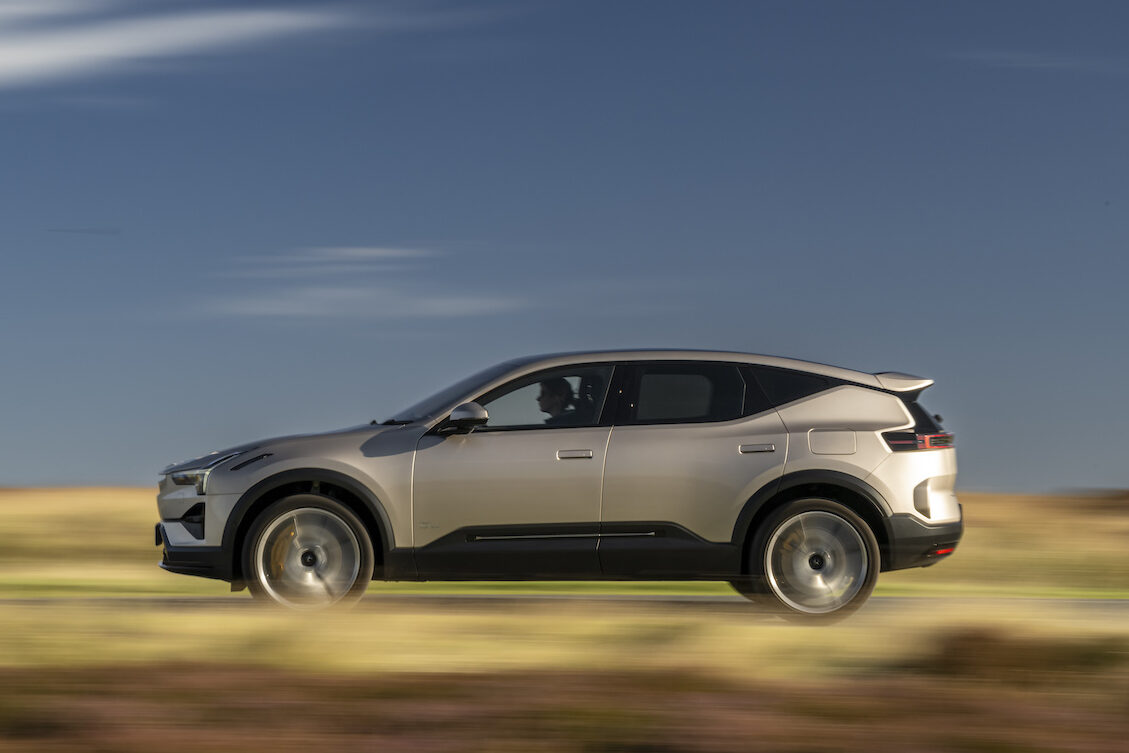
FACT BOX
Model: Polestar 3 Long Range
Price: from £75,900
Power: Battery – 111kWh
Range: 349-390 miles
Average efficiency: 2.9mls/kWh
Average charge time on a domestic wallbox: 15hrs
CO2 emissions: 0g/km
Rating: 9/10

